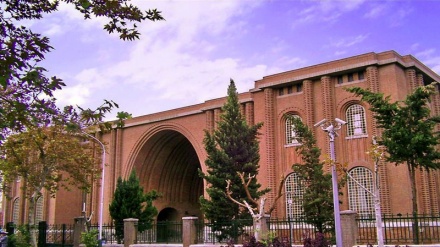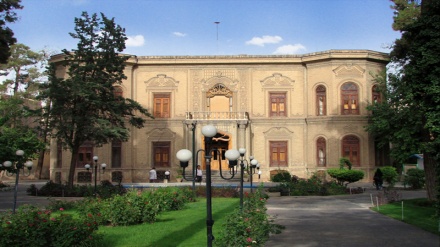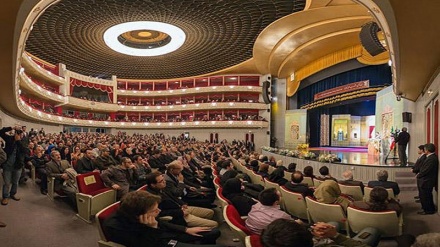Iran your attractive destination (217)
Welcome to the 217th weekly episode of the series Iran Your Attractive Destination. In this episode, we become familiar with a waterfall, a museum, and a birds’ park and complex in Tehran.
The populous city of Tehran maintains a number of unique tourist attraction sites. Additionally, city officials have made use of the scenic landscapes in Tehran, creating a number of parks in this metropolitan city.
In northeastern Tehran, at the heart of Lavizan forested region, one of the largest complexes for residence of birds is situated which is popularly known as the birds’ park. It covers an area of roughly 23 hectares, forming an appropriate habitat for a diverse range of bird species. Currently, 6500 birds of 55 different species are kept in this complex. In the first site of this complex, a number of birds are on display; which are more compatible with the existing environment. One of the unique features of this complex is the freedom of birds, such that almost 90% of these birds are kept in open-space areas, outside cages. The visitors to this park find the chance to see beautiful white swans, pelicans, flamingoes, and colorful gooses and ducks, from a short distance.
One of the unique features of this park of birds is its unique and beautiful design. The courtyard of this park is comprised of cobblestoned paths, surrounded with beautiful trees and flowers. Shades made of wood, cane, and straw with a diverse range of designs, wooden arbors and billboards, small and large waterfalls, and smartly-designed wooden ponds and bridges are observed in abundance within this park.
This park is made of two sections. The first section is the habitat of birds which are caged and don’t maintain the ability to fly. The second phase which covers a smaller area is located in the northern corner of this park. It is home to birds which are capable of flying. A variety of parrots and pigeons are kept in this phase. Within this phase, visitors can see predator birds, in addition to birds that usually live in mountainous regions, and plains, and water birds. Only bird species such as parrots and predator birds should be caged. The last terminal of this park has been allocated for African and Iranian ostriches. Each cage or open-air space belongs to a particular bird; the names of which have been written in English across the installed boards. In the northernmost corner of this park, caged predator birds capture the attention of visitors, including a number of eagles. Also a number of vultures, owls, and hawks can be observed.
In the mid-section of this park; peacocks, pelicans, and flamingoes meet the eye. This region is surrounded by a number of waterfalls and large ponds, which have created an awesome and scenic landscape.
In the southern part of this park, well-known water birds such as ducks, black and white swans, and gooses capture the attention of every viewer.
The first phase of this park was launched in the year 2013. In the park of birds, welfare facilities, such as restaurants, arbors, power-driven machines, and children’s fairground have been taken into consideration for the visitors. Also, a location for quarantine and medical treatment of birds has been considered in this park to keep the donated birds in check, and to allow them entry to the park after confirmation of their health.
In this part of today’s episode, a museum which is situated within an orchard, covering an area of three hectares in eastern Tehran is introduced. Iran is home to a diverse range of historical monuments and cultural heritages; the majority of which have been enlisted as global heritages and are known to all. In this museum, small models of Iran’s historical and tourist attraction sites are on display for the public, which familiarize the visitors with Iran’s ancient civilization and history.
Twelve small models of historical and tourist attraction sites which have been made by Iranian artists, are on display in this museum, such as Bam citadel, Bistoun inscription, Pasargad historical monument, and the tomb of Sheikh Safi Ed-Din Ardebili. This museum also accommodates a gallery and a library, which display books and photos related to historical monuments.
Tehran Waterfall is situated on the foothills of Alborz Mountain Range, forming a bond between man and nature. The lower part of this waterfall looms over an intact and peaceful scenic landscape. The stone-made stairs originate from the parking lot and head toward the waterfall. The first thing that meets the eye within this path is a beautiful pond which ushers in countless natural beauties for the visitors. You can take a rest by sitting within an en route arbor to enjoy the tranquility and silence of this region. From this part, you can easily view the nearby Chitgar Lake, and can enjoy the sound of water waves, shaping in the pond and waterfall. The water current of this waterfall and ponds originate from forested regions. At the highest altitude of this waterfall, there is an arbor, in the middle of which is a small pond. The benches which have been situated around this arbor provide an appropriate location for sight-seeing.
Eight small and large arbors have been situated above this waterfall, within different altitudes. The first three ponds are small and the next three ponds are relatively larger. Each of these ponds is covered with different plants. Next to these ponds, lotus flowers are evident. A bit further, palm trees can be spotted.
Next to the third lake, a number of cactus plants meet the eye. Also a number of mulberry, Lombardy poplar, and white poplar trees are evident over there.
There are two existing paths for ascending mountains and reaching ponds. The surfaces of these paths are cobblestoned; with a number of other minor paths, guiding the visitors toward the ponds. A number of small creeks also run through this region, which pour into the orchards and ponds.
MR/MG


